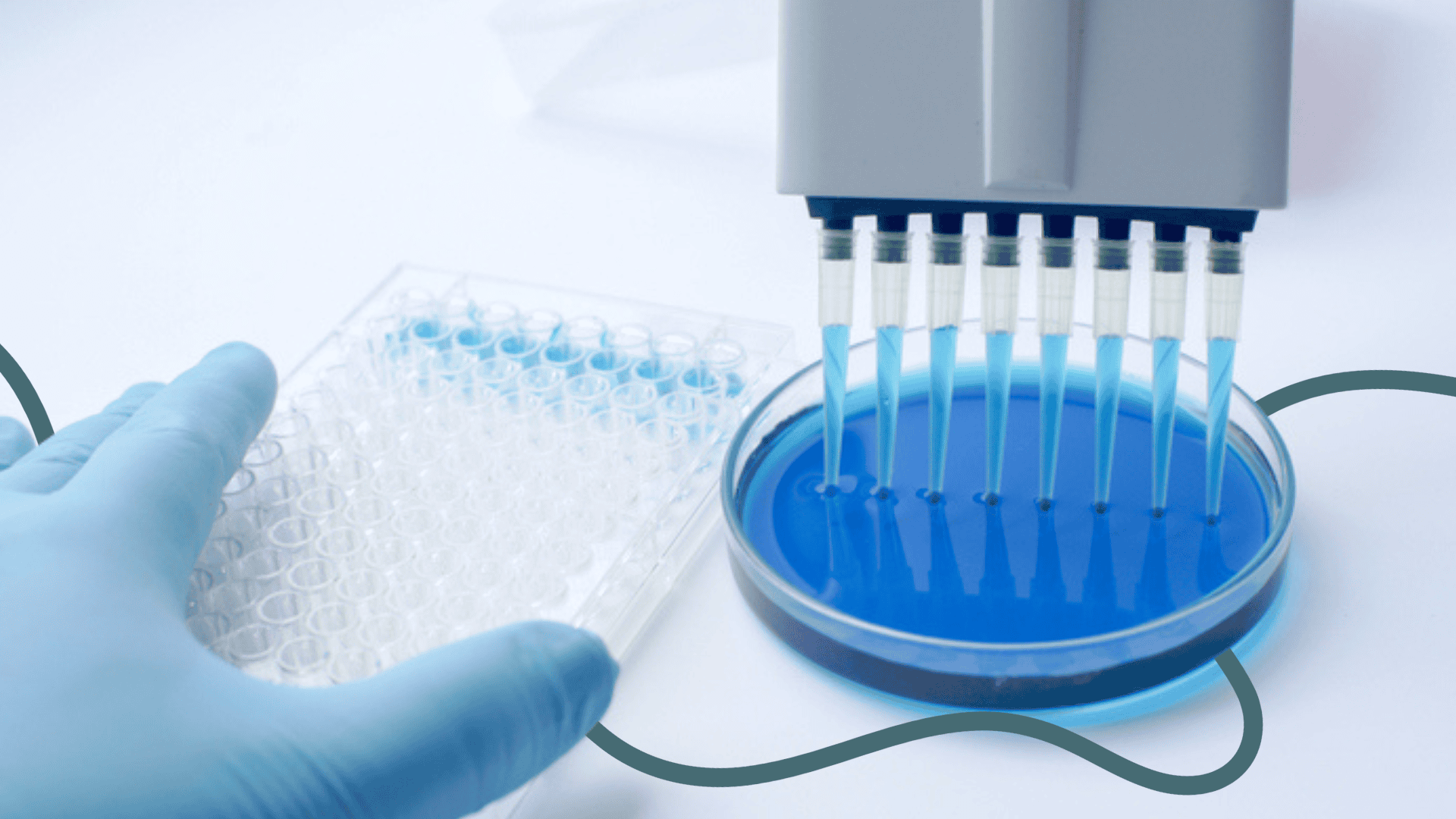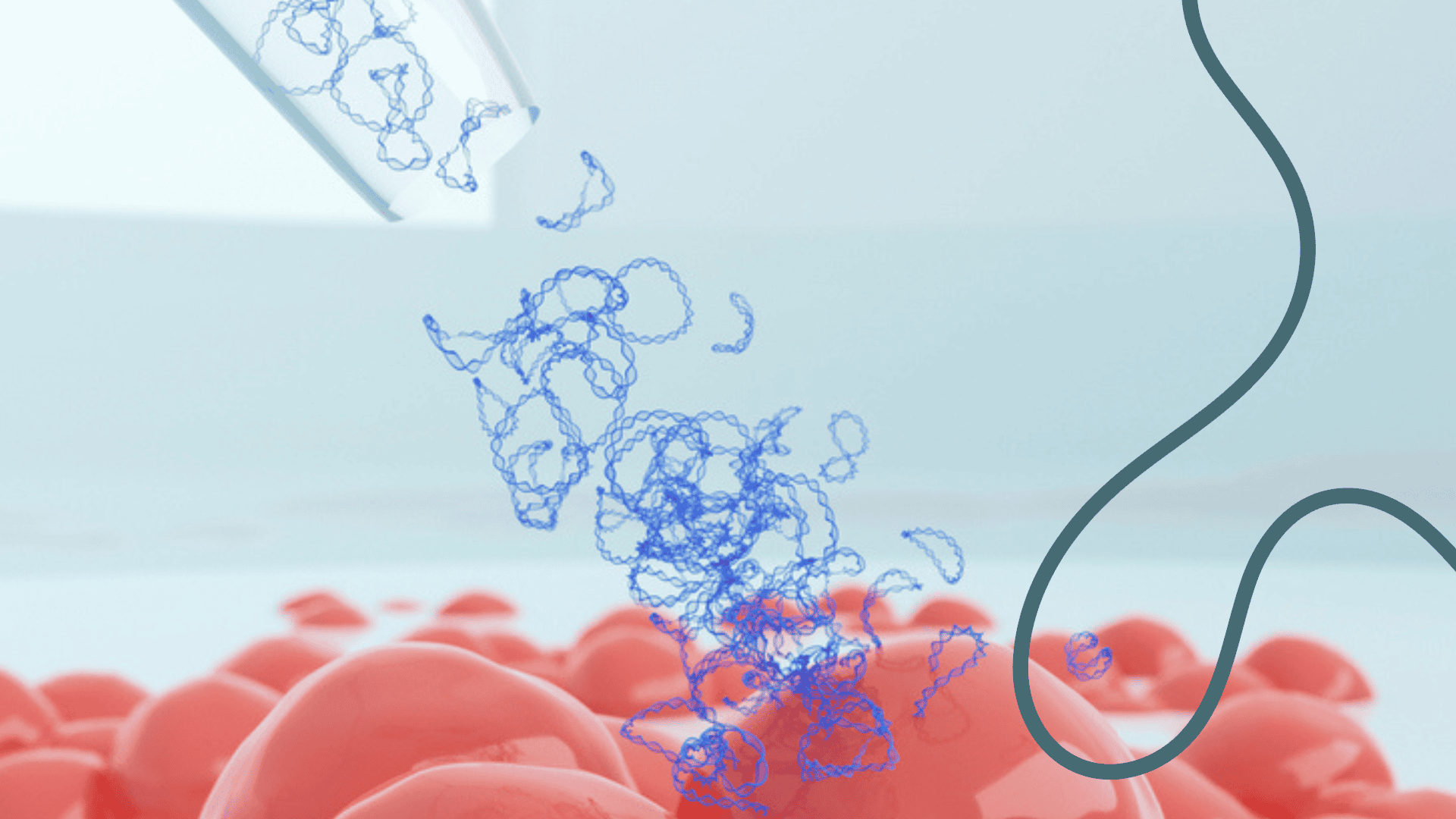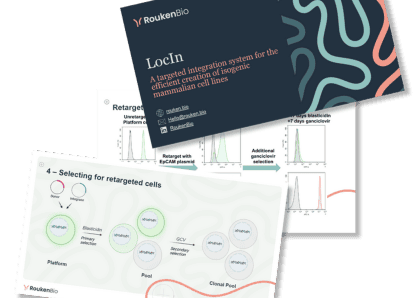Enhanced Transgenic Cell Lines: How LocIn Accelerates Cell Line Engineering
Efficient generation of genetically modified cell lines is critical for drug development but traditionally slow and labor-intensive. RoukenBio’s LocIn system offers a targeted integration technology that significantly accelerates this process by enabling precise gene insertion without the need for subcloning, thereby improving consistency and reducing timelines.

|
August 6, 2025
|
7 min read
The bottleneck in transgenic cell line generation
In therapeutic development and cell-based assay platforms, it is often necessary to modify gene expression in existing cell lines to provide a relevant substrate for an assay. It is achieved by either modifying the endogenous genes (knock-out) or by integrating transgenes in the genome for ectopic expression (knock-in). The generation of such genetically defined stable modifications in mammalian cell lines is crucial but time-consuming.
Traditional workflows can stretch over 3 to 4 months, particularly when aiming for consistent transgene expression. The primary challenges include clonal variation in the level of gene expression, time-intensive screening of functionally optimal clones, and lack of control over copy number and location of genomic integration of the transgene. The good news is that RoukenBio’s new targeted integration system LocIn (genomic Locus-specific knock-in) is designed to change that.
What are cell lines and why are they important in drug development
First, let’s take a step back and define what cell lines are and why they are essential in therapeutic development. Cell lines are populations of cells derived from multicellular organisms and immortalised, so they can be grown in vitro indefinitely. This makes them incredibly useful for long-term research and drug development projects.
Usually, the cells are derived from a tissue of interest. Then, establishing a cell line involves clonal isolation of a single cell, so that all the cells in the lineage share the same genetic makeup and an almost identical gene expression profile. This gives us a consistent and controllable cell-based model for experiments.
Two well-known cell lines are:
- HeLa cells - first immortal human cell line derived from cervical cancer cells
- CHO cells - Chinese Hamster Ovaries – widely used in biotechnology, especially for producing therapeutic proteins

Cell lines play a critical role in drug development from predicting how certain drugs will behave in the human body to standardised regulatory testing. Some use cases include:
- Predicting human response: as cell lines model human tissues, they give us early insights into potential human responses to molecules without needing to test them in humans right away.
- Screening drug candidates: by using cell lines, researchers can rapidly test thousands of compounds cost effectively to assess the safety and effectiveness of drug candidates that allows them to narrow down the most promising options.
- Studying Mechanism of Action (MOA): cell lines are also invaluable to study MOA. Cell lines allow us to delve into how a drug interacts with specific cellular pathways which is crucial for understanding both therapeutic and potential side effects.
- Regulatory testing: from a regulatory standpoint, cell lines help meet early-stage safety requirements. They provide foundational safety data that is often required before progressing to animal studies or clinical trials, making them a key part of the approval pipeline.
Traditional transgenic cell line generation timelines
Though immortalised cell lines are adequate as cell-based models for most drug development processes, sometimes it is essential to generate transgenic cell lines that over-expresses or have user-controlled expression of a gene of interest. A prerequisite to achieve ectopic expression of a transgene is stable integration of the gene expression cassette in a genomic locus of interest.
The current method of genomic integration includes lentiviral transduction and/or CRISPR-Cas mediated site-specific integration of a gene of interest. Though they are efficient in their own respect, both are time and labour intensive. It is a multistep process that starts with the transfection or transduction of the target cell line with the gene of interest (GOI), that is usually co-expressed with an antibiotic resistance gene used as a marker.

This step is followed by growing the transformed cells in growth media supplemented with the respective antibiotic. The antibiotic resistance marker allows selection of a pool of cells that will also express the GOI in high likelihood. After this, pool analysis is carried out to quantify the expression levels of GOI in transformed cells compared to untransformed cells.
Usually at this phase the pool’s expression profile is heterogeneous, due to varied multiple integrations (in the case of lentiviral transduction) or off-target integrations (for CRISPR-Cas methods) in different cells. So if a clonally homogeneous expression cell line is required, then a subcloning step is performed via single cell dilution cloning or by fluorescent activated cell sorting.
The single cells are allowed to grow, and individual colonies are isolated and expanded in the Colony isolation step. As the final step, clonal analysis is performed, where single cell clones are analysed for optimal gene expression profile. It usually takes a lot of time to complete this step and it depends on the number of clones that need to be analysed before a desirable clone is obtained for use in drug development assays.
This whole process must be repeated every time a new transgenic cell line needs to be created from a particular parent cell line and is far from ideal. To optimise this workflow for drug development assays, it would be beneficial if the lentiviral/CRISPR-Cas method is used only once to generate well-characterised platform cells with a landing pad in the parent cell line. That can then be used repeatedly for integrating any GOI in the platform locus, thereby reducing costs and improving reproducibility of test results.
What is LocIn? A next-gen Targeted Integration System shortening traditional timelines
LocIn is a technology that consists of well-characterised platform cells with landing pads integrated in either safe-harbour locus like AAVS1, ROSA26, etc. (site-specific platform system) or transcriptionally active regions of the genome (multicopy platform system). LocIn leverages site-specific Recombinase-Mediated Cassette Exchange (RMCE) to precisely replace the landing pad cassette with a gene of interest. LocIn’s two-step selection process ensures removal of all copies of the platform cassette, while exclusively integrating the desired gene in the predefined genomic loci of the transgenic cell line.
The unique advantage of using the LocIn targeted integration system for cell line generation is that the need of subcloning and clone analysis can be skipped from the traditional protocols, shortening the time needed to generate functionally viable clones to about 6 weeks. This ensures a smooth and speedy solution we all need to expedite drug development.

Additional LocIn features worth mentioning:
- Platform options: Select site-specific or multicopy-platform systems for low or high expression needs, with complete control over your cell line generation process.
- Uniformity: Get consistent results every time, with the same integration pattern across all cell lines.
- Stability: Be sure of stable expression levels of GOI in cell lines over multiple generations.
- Control: Reduce integration site artefacts and variability for more reliable results.
- Ready-to-go: Can be deployed rapidly into existing workflows.
LocIn in action
Example retargeting data using a plasmid expressing EpCAM:
Multicopy platform cells expressing GFP were transfected with plasmids expressing a payload GOI (EpCAM) and recombinase enzyme. GFP and EpCAM protein expression levels were quantified on flow cytometer before and after retargeting, using antibody staining for EpCAM.
In the figure above, the top panels show GFP expression in platform cells (green histogram) compared to WT cells (grey histogram) that has no platform cassettes, and the bottom panels show EpCAM expression in platform cells (red histogram) compared to WT cells (grey histogram).
As expected, unretargeted platform cells have high GFP expression (top-left panel) and no EpCAM expression (bottom-left panel) compared to WT cells. After transfection and blasticidin selection for 10 days, the platform cells show loss of GFP expression (top-middle panel) and high EpCAM expression (bottom-middle panel).
However, the loss of GFP is not complete at this stage as there are still cells in which all copies of the platform cassettes were not exchanged by the retargeting plasmids. Therefore, the cells were further grown in ganciclovir selection media for another 7 days to enrich for cells that have managed to replace all the platform cassettes in the genome.
Complete loss of GFP expression in retargeted platform cells (top-right panel) compared to WT cells confirms that 100% retargeting has occurred in these cells. In the final pool of cells, a very high and homogeneous expression of EpCAM (bottom-right panel) was observed, demonstrating high degree of clonality. This was achieved after just 17 days of antibiotic selection, without the need for any subcloning.
LocIn in summary
Generating stable, isogenic cell lines is a foundational yet time-consuming process in drug development, often hindered by clonal variation and labour-intensive screenings. Traditional methods can stretch timelines to 3–4 months, delaying critical research.
LocIn on the horizon, using site-specific RMCE to precisely insert genes of interest, eliminates the need for subcloning and clone analysis. The result? Shortened timelines, greater consistency, and full control over cell line development. With its flexible platform options and rapid integration into existing workflows, LocIn offers a smarter, faster route to therapeutic discovery.
Join our community of curious minds on LinkedIn
🗓️ Stay informed with our monthly scientific newsletter, published on LinkedIn on the last Wednesday of each month.
These editions bring you the latest in drug development breakthroughs, industry trends, and expert insights from the brilliant minds at RoukenBio.
Subscribe today on LinkedInPrecision, speed and control in every cell line integration with LocIn
Find out more about how LocIn works and how it could transform your cell engineering needs.
Access the technical slide deck

